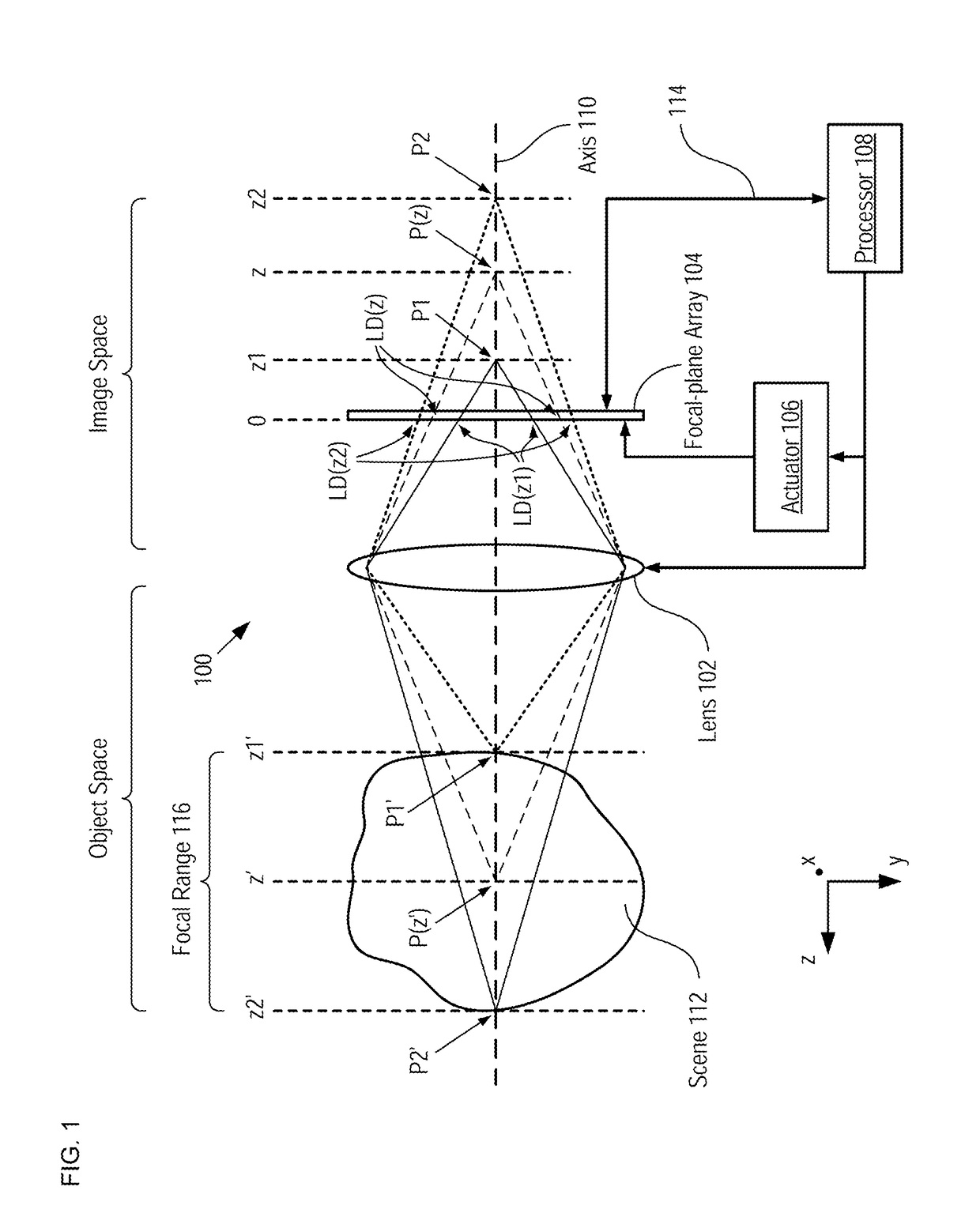System and method for improved computational imaging
a computational imaging and image processing technology, applied in the field of computational imaging, can solve the problems of reducing the depth-of-field (dof) of the resultant image, reducing the spatial and longitudinal resolution, and not recovering the information about the real-world scene, so as to enhance the depth-of-field image and spatial temporal resolution. , the effect of enhancing the depth-of-field imag
- Summary
- Abstract
- Description
- Claims
- Application Information
AI Technical Summary
Benefits of technology
Problems solved by technology
Method used
Image
Examples
Embodiment Construction
[0045]Embodiments of the present invention employ image translation as a coding mechanism to improve the quality of a reconstructed image in computational imaging systems. Specifically, the image translation includes simultaneous relative lateral and longitudinal motion between a focal-plane array of the imaging system and a physical light distribution provided to it by the optics of the imaging system during each exposure frame of the imaging system.
[0046]Computational imaging relies on a model for the physical image capture process, wherein the image, g(x,y,z,t) (where x, y, and z are spatial coordinates in the image space of lens 102) is a function of the physical measurements f(x′,y′,z′,λ,t) of the scene being imaged (where x′, y′, and z′ are spatial coordinates in the object space of lens 102), as influenced by the optical characteristics of the imaging system—specifically, its PSF, h(x,x′,y,y′,z,z′,λ). Actual measurements in a modern digital imaging system consist of discrete ...
PUM
 Login to View More
Login to View More Abstract
Description
Claims
Application Information
 Login to View More
Login to View More - R&D
- Intellectual Property
- Life Sciences
- Materials
- Tech Scout
- Unparalleled Data Quality
- Higher Quality Content
- 60% Fewer Hallucinations
Browse by: Latest US Patents, China's latest patents, Technical Efficacy Thesaurus, Application Domain, Technology Topic, Popular Technical Reports.
© 2025 PatSnap. All rights reserved.Legal|Privacy policy|Modern Slavery Act Transparency Statement|Sitemap|About US| Contact US: help@patsnap.com



